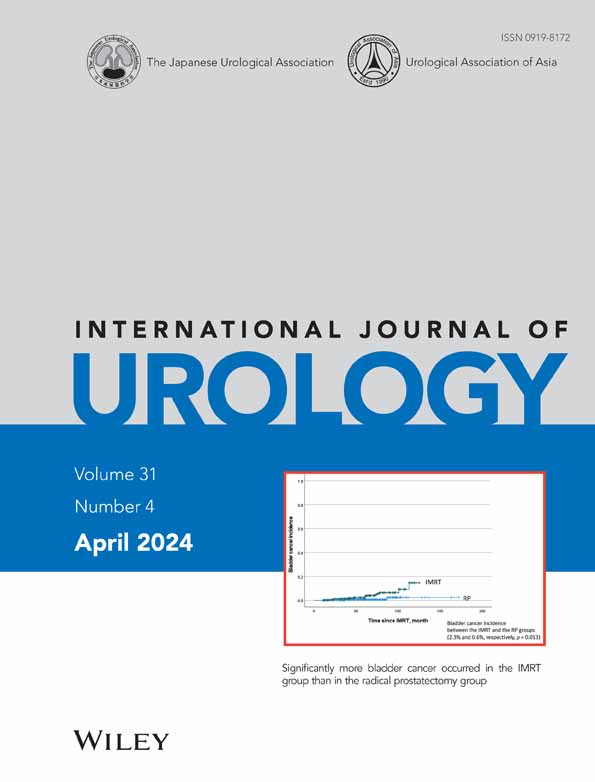Editorial Comment
Editorial Comment on Does intensity-modulated radiation therapy by helical tomotherapy for prostate cancer increase the subsequent risk of bladder cancer? A propensity score-matched analysis
-
Does intensity-modulated radiation therapy by helical tomotherapy for prostate cancer increase the subsequent risk of bladder cancer? A propensity score-matched analysis
- Fumio Tsukuda,
- Yasunari Tanaka,
- Shuichiro Narita,
- Toshihiro Shimizu,
- Shu Nakasuka,
- Kiichi Hagiwara,
- Noboru Sakamoto,
- Kawano Toshihiro,
- Yutaka Horiguchi,
- Shoji Koga,
- Volume 31Issue 4International Journal of Urology
- pages: 379-385
- First Published online: January 9, 2024
First published: 10 January 2024
No abstract is available for this article.
CONFLICT OF INTEREST STATEMENT
Author for the editorial comment has no conflict of interest.
REFERENCES
- 1Tsukuda F, Tanaka Y, Narita S, et al. Does intensity-modulated radiation therapy by helical tomotherapy for prostate cancer increase the subsequent risk of bladder cancer? A propensity score-matched analysis. Int J Urol. 2024; 31: 379–385.
- 2Wang Y, Chen R, Deng X, Jiang X. Incidence and associated factors of developing second pelvic malignant neoplasms among prostate cancer patients treated with radiotherapy. Front Oncol. 2023; 13:1260325.
- 3Downes MR, Hartmann A, Shen S, Tsuzuki T, van Rhijn BWG, Bubendorf L, et al. International Society of Urological Pathology (ISUP) consensus conference on current issues in bladder cancer. Working group 1: comparison of bladder cancer grading system performance. Am J Surg Pathol. 2024; 48: e1–e10.
- 4Tsuji K, Kaneko M, Harada Y, Fujihara A, Ueno K, Nakanishi M, et al. A fully automated artificial intelligence system to assist pathologists' diagnosis to predict histologically high-grade urothelial carcinoma from digitized urine cytology slides using deep learning. Eur Urol Oncol. 2023:S2588-9311(23)00254-7.




